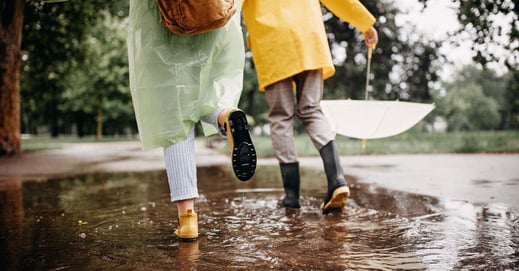
Our previous “Real World Examples” post focused on Positive Climate. Moving on through CLASS® interactions, let’s explore the dimension of Educator (Teacher) Sensitivity. This dimension emphasizes the importance of ensuring every child feels safe and supported. Reflect on your own learning. What do you need to succeed? You probably need to ask questions, face challenges, give it your best effort, learn from mistakes, and keep pushing forward. As you consider this list, you'll realize that learning requires taking risks.
This highlights how important it is for educators to create a supportive environment where children feel safe to take risks and see failures as a valuable part of the learning process. Through the CLASS lens, educators who consistently score high in Educator (Teacher) Sensitivity effectively address children's social, emotional, and academic needs in a timely manner, helping them feel comfortable taking risks and actively participating throughout the day. This sets the foundation for their development of relationships, regulation skills, academic skills, and overall well-being.
Awareness
The Example: A Rainy Day
Let’s think about how you get ready in the evening for the next day. You check the weather forecast to see tomorrow’s temperature and if it will rain. Since rain is predicted, you decide to prepare for your walk to work by laying out a raincoat and an umbrella. The next day, as it starts to sprinkle, you open your umbrella. Then you notice your neighbor, Mr. Pearson, sitting on a bench and having trouble with his own umbrella. He’s struggling to figure out how to latch it so it stays open. You decide to check in by calling, “Hi, Mr. Pearson! Do you need any help opening your umbrella?”
Responsiveness
The Example: A Rainy Day (continued)
When he doesn’t respond but continues to struggle, you decide to walk over to him and say, “I see you’re having some trouble with that umbrella. I had a hard time getting mine to stay open as well. It’s frustrating. Can I help you open it?” As he smiles gratefully and hands you his umbrella, you ask him to hold yours so you both can stay dry while you try to figure it out. As you begin working on it, you invite Mr. Pearson to talk with you about the problem by saying, “Tell me what you’ve already tried doing to fix this umbrella.” As the rain continues, you and Mr. Pearson continue to work together to solve the problem.
Problem Resolution (Addresses Problems)
The Example: Returning an item to a store
Think about a time when you’ve had to return items to a store that just didn’t work for you–whether they malfunctioned or you didn’t like them. During these returns, you’ve likely encountered varying levels of support from a customer service agent. Recall a time when you received exceptional help and left feeling like your issue was truly resolved. For example, imagine you bought a charging cord for your phone, only to find that it doesn’t fit. As you approach the return desk, you express your frustration. Instead of simply processing the return, the clerk asks for more details and engages in a discussion about the problem. They empathize with your frustration and go out of their way to show you the correct type of cord for your phone. They even help you understand the differences among various brands. In the end, you leave with the right cord, feeling heard and supported and knowing that your problem has been resolved. And as a bonus, you can charge your phone effectively!
Child (Student) Comfort
The Example: A Neighborhood Party
Summertime is a great time for neighborhood get-togethers and family reunions. When you arrive at one of these large events, you probably look for people you know and enjoy talking with. You might even ask your friends to introduce you to others so you can meet new people. After a while, you find a group where you feel comfortable, and conversation flows easily. You even take a chance and introduce yourself to a few new faces, knowing your friends are close by to support you if things don’t go well. Having this “secure base” makes engaging with strangers easier and gives you the confidence to take risks.
What are some of your favorite real-world examples of Educator (Teacher) Sensitivity? Do you ever think about Educator (Teacher) Sensitivity when navigating situations in the adult world? What have you learned from your experiences that can be applied to how you support children in the learning setting?

